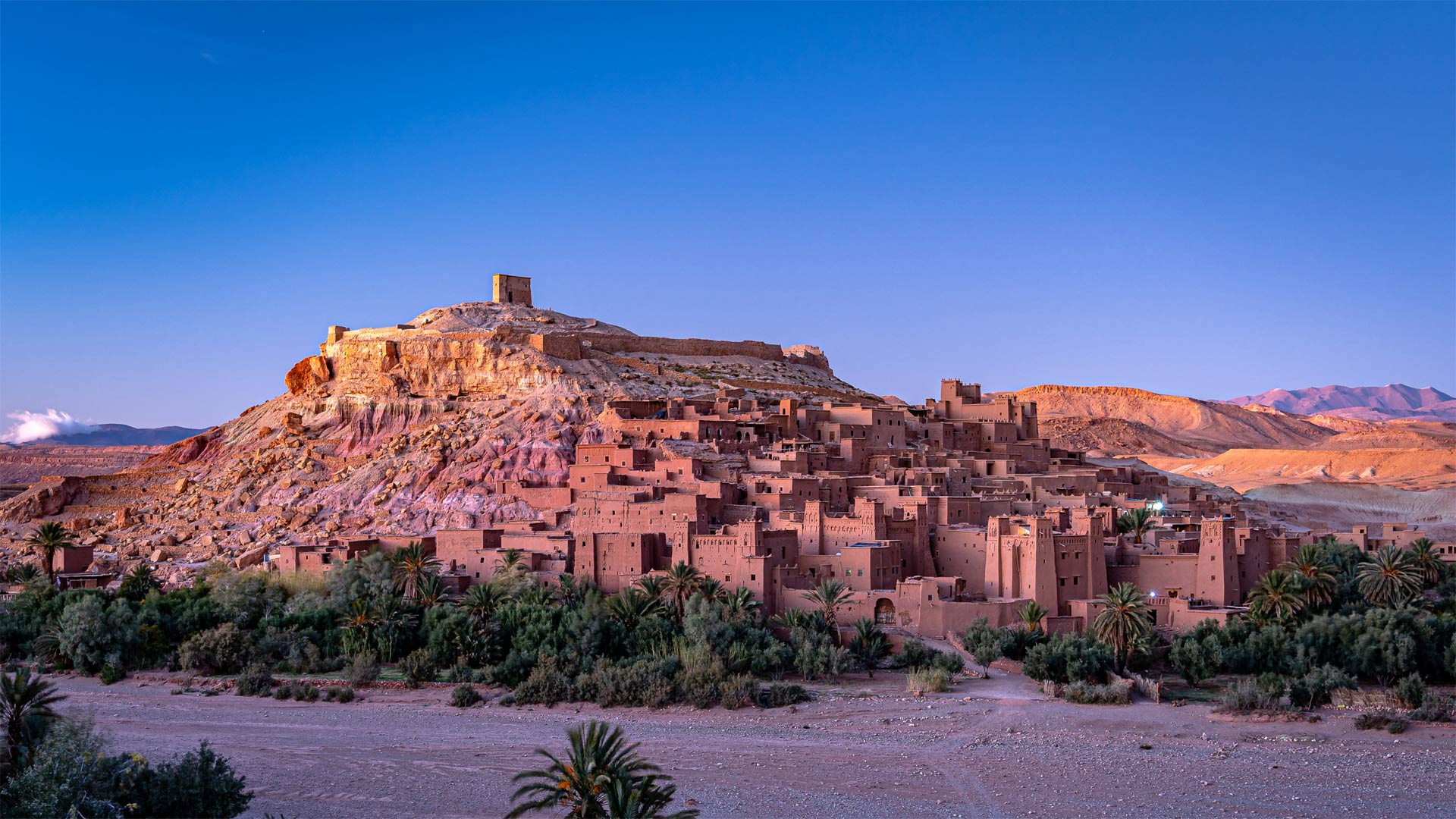阿泰特·本哈杜,阿特拉斯山脉,摩洛哥 Aït Benhaddou, Atlas Mountains, Morocco (© Alex Cimbal/Shutterstock)
 阿泰特·本哈杜,阿特拉斯山脉,摩洛哥 Aït Benhaddou, Atlas Mountains, Morocco (© Alex Cimbal/Shutterstock)
阿泰特·本哈杜,阿特拉斯山脉,摩洛哥 Aït Benhaddou, Atlas Mountains, Morocco (© Alex Cimbal/Shutterstock)
At the gates of the 'ksar'
At the eastern edge of the Atlas Mountains in Morocco, Aït Benhaddou stands suspended in time. The ancient mud-brick 'ksar' (fortified city) was first built roughly 1,000 years ago, catering to travelers along the former caravan route between the Sahara Desert and the city of Marrakech. As a prime example of Moroccan earthen clay architecture, Aït Benhaddou has been a UNESCO World Heritage Site since 1987. It's no longer teeming with the large numbers of people who once lived there. But there are small markets and a few families within the ancient city who cater to the visitors who come to walk its historic streets. As a symbol of Morocco's enduring history, Aït Benhaddou would be a fine place to reflect upon the events of January 11, 1944, when Moroccan nationalists issued a public proclamation calling for the independence of their country, an audacious action that sparked the movement that would end colonialism by 1956.
在"克萨尔"的门口
在摩洛哥阿特拉斯山脉的东边,阿赫特·本哈杜站及时停站。古老的泥砖"ksar"(防御城市)始建于大约1000年前,为沿撒哈拉沙漠和马拉喀什市之间的前大篷车路线的旅行者提供餐饮服务。作为摩洛哥土粘土建筑的典范,Aét Benhaddou 自 1987 年以来一直被联合国教科文组织列为世界遗产。它不再挤满了曾经住在那里的大批人。但是,在古城内,有一些小市场和几个家庭,迎合那些来走历史街道的游客。作为摩洛哥悠久历史的象征,Aét Benhaddou将是反思1944年1月11日事件的一个很好的场所,当时摩洛哥民族主义者发表了一项公开宣言,呼吁其国家独立,这一大胆行动引发了到1956年结束殖民主义的运动。
评论已关闭